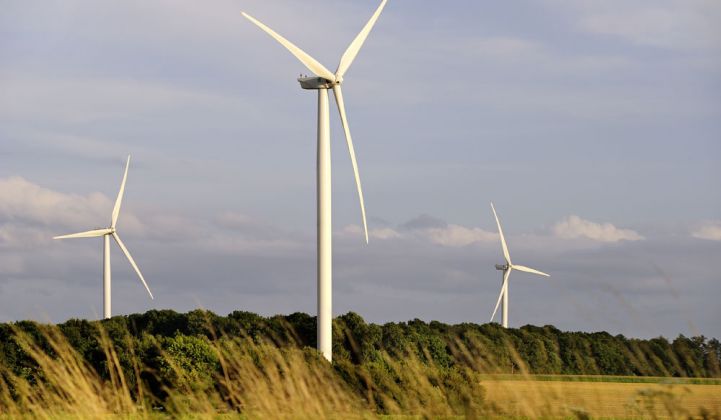U.S. wind installations could top 10 gigawatts a year, even after the federal Production Tax Credit runs out in 2020, a top asset holder said.
“I think that 2020 is probably going to be a gargantuan year for the industry, with folks trying to get their projects done before the end of the 100 percent PTC,” said Mark Goodwin, president and CEO of Apex Clean Energy. “But I think it will continue to be strong, [with] 10+ gigawatts hopefully installed per year.”
The estimate was “seat-of-the-pants,” Goodwin noted, and could go higher or lower depending on government policy. “I think it’s a good mid-range, maybe even low,” he said.
Apex has some experience with large amounts of wind development. It was America’s biggest wind installer in 2015, beating NextEra Energy Resources to the top slot by bringing more than a gigawatt of capacity on-line.
The installation estimate is significantly higher than that in MAKE Consulting’s Q3 2017 Global Wind Power Market Outlook Update. This predicts 59 gigawatts of new capacity between 2017 and 2026, or less than 6.6 gigawatts a year.
Like Goodwin, MAKE sees a strong outlook for wind towards the end of the PTC.
“2019 and 2020 increasingly appear to be ‘boom years’ that will strain the wind industry’s capacities ahead of policy expiration,” said the update.
Post-PTC, though, “expectations remain grim and unchanged amid weakness in demand for power, large-scale pre-2022 subsidized renewables build and other market factors,” MAKE said.
Apex, which is probably among the top two U.S. wind installers in terms of project pipeline, doesn’t share that view.
“We think that with the improvements in the technology, the economics will remain strong in 2021 and during the phase-out of the PTC,” Goodwin said.
Wind economics are already highly compelling, he said, with prices below $20 per megawatt-hour in windy sites and between $30 and $40 per megawatt-hour in less favorable locations. These levels were getting close to the long-term operations and maintenance cost for plants, said Goodwin, meaning that further price reductions would be difficult without market reforms.
The PTC regime has helped cut costs by giving industry players long-term certainty on manufacturing, Goodwin said.
The only things that might slow the industry down, he added, are macroeconomic factors such as a financial downturn. In the meantime, wind power’s extremely low cost is turning projects into a valued asset for utilities.
Traditionally, power companies tended to buy wind energy through long-term power-purchase agreements. Now they’re looking to buy entire plants, Goodwin said.
“It’s a great substitution in their balance sheet for retiring fossil-fuel plants,” he observed.
Last month, for example, Apex sold off two properties to utilities in the Midcontinent Independent System Operator catchment area within a single week.
Apex’s 300-megawatt Upland Prairie Wind project, in the northwest Iowa counties of Clay and Dickinson, went to Interstate Power and Light Company, an Alliant Energy Corporation subsidiary.
The project isn’t built yet; once Apex finishes the development work, the plant will be constructed and operated by Alliant. Previously, Apex sold its 300-megawatt Dakota Range I & II projects, sited in South Dakota, to Xcel Energy.
Apex expects to commercialize 1.5 gigawatts of wind energy this year, with an additional 2 gigawatts coming each year through 2020, the company announced recently. Apex has closed 3 gigawatts of project sales since 2012 and brought on-line almost 1.7 gigawatts in the last two years.
As well as continuing sales to utilities, Goodwin said Apex saw increasing opportunities in the corporate market. The company has already sold two projects to home furnishings giant Ikea. “I see that continuing to be a trend, along with the utilities,” he said.



